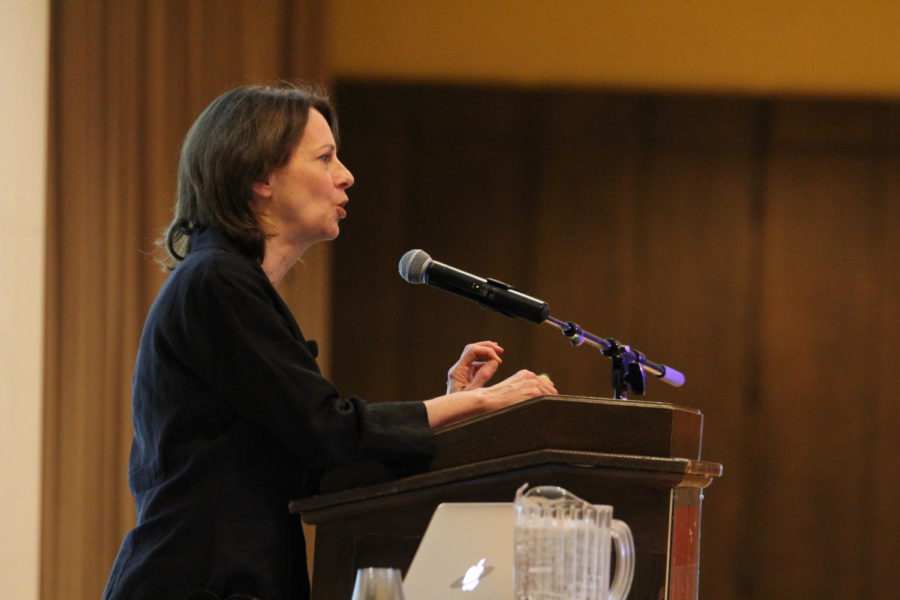Iowa State professor making science fiction reality
Dr. Robyn Lutz speaks during the LAS Dean’s Lecture to a packed Sun Room in the Memorial Union on March 2. Lutz spoke about the programming of molecules and DNA with the help of nanotechnology.
March 3, 2017
Imagine fleets of microscopic, synthetically programmed cargo vessels navigating blood vessels in your body, isolating infected cells and dispensing medication directly where it is needed.
Robyn Lutz, a computer science professor at Iowa State, is forerunning research that would make this science fiction a reality. She unveiled her findings Thursday in the Memorial Union’s Sun Room.
Lutz shared how researchers can use computer processing to manipulate DNA molecules into complex structures, and told guests about the creation of purpose-specific “Nanobots” to fulfill complex medical tasks on the Nano scale. This science is called molecular programming.
“The use of these DNA Nano-systems as drug delivery devices is something that is being done in the lab right now, and that is probably in our future,” Lutz said.
For those unaware of precisely how small Nano scale is, Lutz was kind enough to offer her favorite definition: “A nanometer is the length that a man’s beard grows between the time he reaches for the razor and when he raises it to his face.”
She also noted the economic significance within the field of nanotechnology. The USA reported around $500 billion in nanotech revenue for 2016 alone, over 20 times the $23 billion of investments the federal government made in the same field since 2001.
This kind of technology calls for complex safety constraints. If malfunctioning Nanobots ran through your blood stream, the consequences could be lethal.
One audience member asked if Nano systems could be weaponized, or otherwise used to inflict harm.
Lutz reported such negative utilities are a possibility, but the synthetic nature of computer programming would make it less threatening than technology that already exists.
Researchers are currently integrating software alarm technology with synthetic and DNA molecules to solve this problem. A theoretical “molecular watchdog timer” could ensure all Nano systems operate correctly within their objective, Lutz reported.
Although researchers have designed and simulated the use of molecular watchdog timers, they lack the resources to bring them to fruition within a Nano system.
All of these technologies exist individually, Lutz reminded the audience.
“The focus now is on integrating… different kinds of DNA Nano systems… So we can build up more complicated things,” she said.
These advanced Nano systems have use outside of DNA. Similar devices could detect particular molecules, say toxic substances in the air or water, provided they had a reliable alarm system.
“It’s a big future for both robotics and biology in general,” said Kathryn Kananen, a major in genetics and bioinformatics.
The revolutionary science of molecular programming is still very much in its beginning stages. Super complex, self-constructing systems could very well treat the tumors of future cancer victims, or ensure the purity of every water source on the planet.
Lutz and her colleagues urge us all to keep our eyes and ears on this exciting field.







